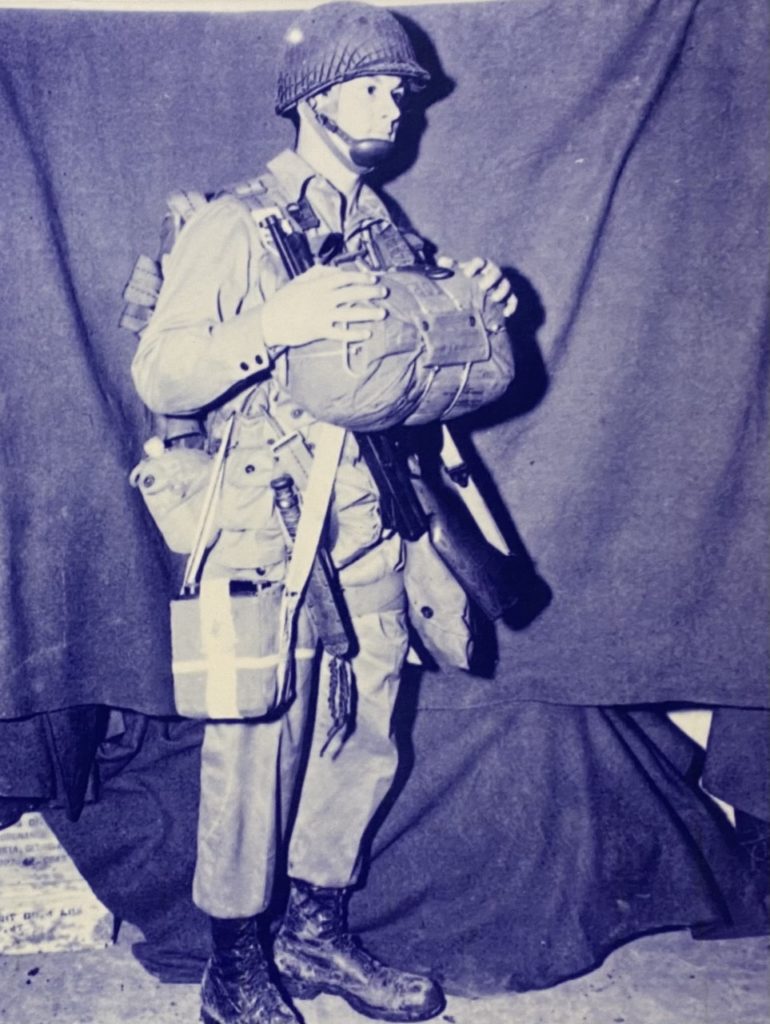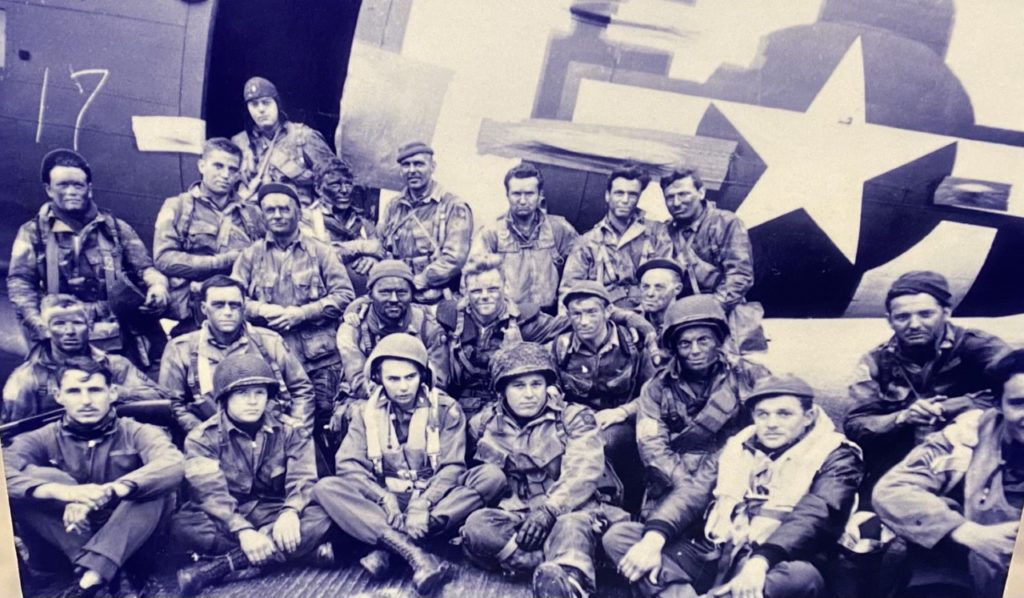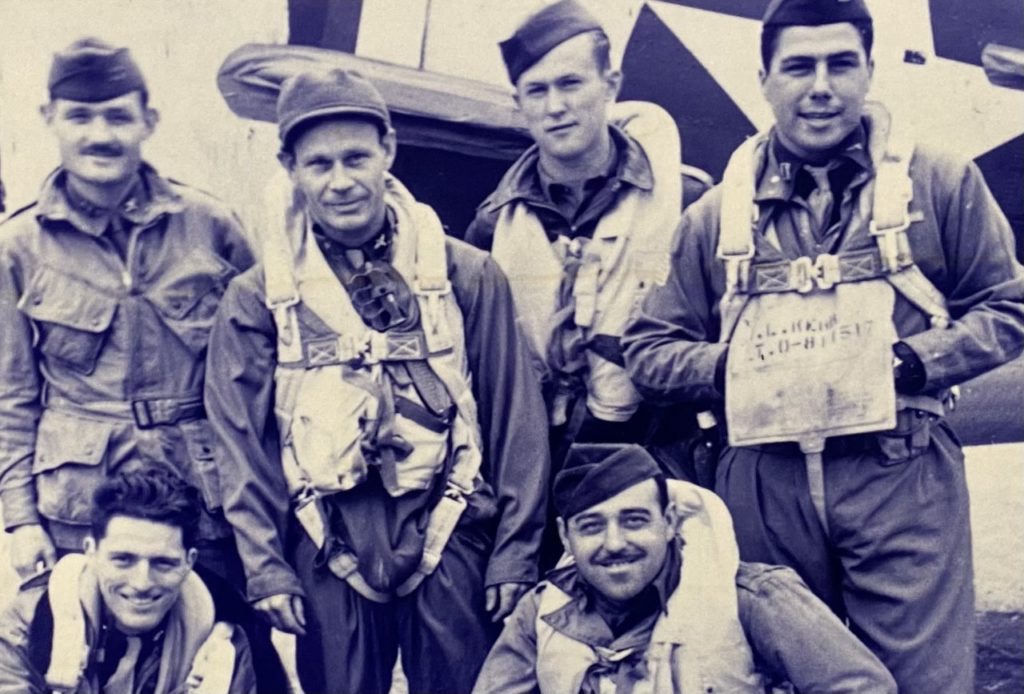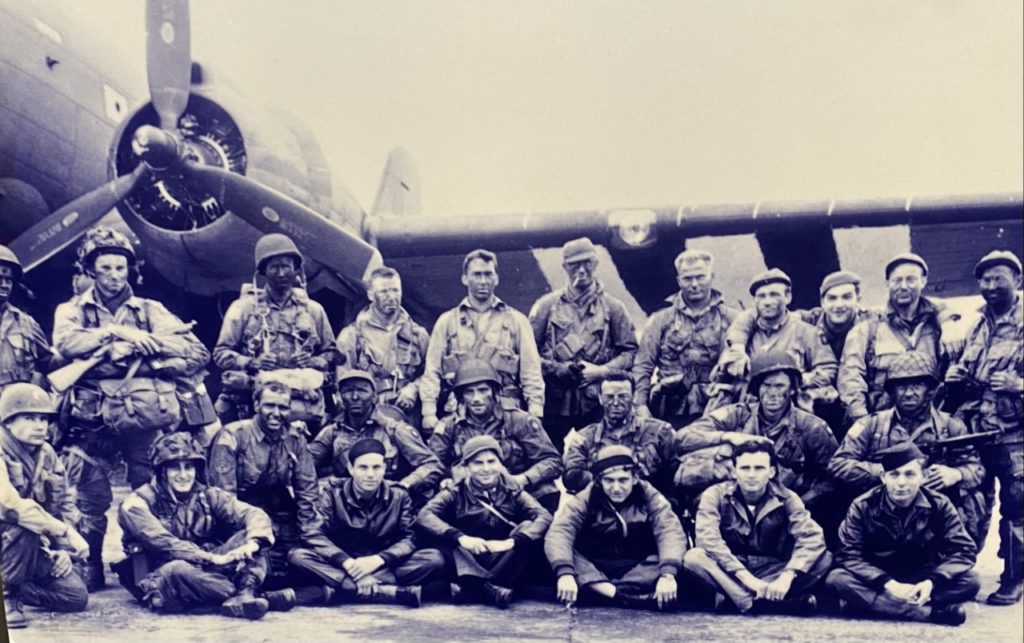Pathfinders: First on French Soil
Shortly after midnight on 6 June 1944, a group of low-flying C-47 aircraft crossed over the French coast. Eight minutes later, Captain Frank L. Lillyman, leader of the 101st Airborne Division pathfinder team, jumped into the night to become the first Allied Soldier to land on French soil. It was 1215 hours on D-Day. Far to the west, hundreds of aircraft were lined up on British airfields ready to carry the 82d and 101st Airborne Divisions to Normandy. Lillyman and his fellow pathfinders would lead them to the proper drop zones.

Pathfinder Teams
Pathfinder teams, special groups of Paratroopers who marked drop and landing zones, were developed because of the problems of the airborne assault in Sicily in July 1943. Major General Matthew B. Ridgway, 82d Commander, wanted drop zones marked with lights and radio-transmitter beacons. In late August 1943, pathfinders conducted tests, jumping in advance of the main assault force areas. Four devices were used: Krypton lights, a special radio-transmitter known as 5G, a portable radar beacon known as Eureka which transmitted range and bearing to the drop zone, and Rebecca, a receiver in the aircraft that picked up the Eureka signal. Of these devices, Eureka-Rebecca was used to guide the 82d Airborne Division to the Salerno drop zone in mid-September 1943. It was successfully used in subsequent operations in Normandy, Southern France, Holland and Germany.
The pathfinders parachuted into Normandy a full hour ahead of the main airborne assault and six hours before the amphibious troops hit the beaches. Once on the ground, their mission was to seize the drop zones and use the devices mentioned above and signal lanterns to bring Allied aircraft onto the target areas. Pathfinders typically jumped in small sections or “sticks” of about 18 paratroopers: one dozen would assemble the beacons and lights and another six to provide security. Each pathfinder group was assigned its own landing zone to capture and mark. The American drop sites were located a few miles inland from Utah Beach in the west, while the British made their jumps east of Sword Beach.
Directing airborne forces to the correct landing areas, of course, was not an exact science. The “fog of war” and the hazards of night operations made pathfinding difficult in the best of circumstances. In Normandy, hedgerows, darkness and alert German units prevented many pathfinders from accomplishing their missions. In Southern France, however, the drop zones were clearly marked and most Paratroopers landed right on target. Subsequent operations were carried out in daylight, enabling pathfinders to quickly mark landing areas for Paratroopers and gliders.
The Pathfinders of Normandy
Captain Frank Lillyman, 101st Airborne Division, was the pathfinder leader for Normandy. He gathered and trained volunteers from both the 101st and 82d. These included troopers from the 504th PIR, 82d, which had fought at Anzio from January to March 1944. The 504th did not go to Normandy, but 50 of its Paratroopers volunteered for the perilous duty of pathfinding. These remarkable photographs were taken just before the pathfinders took off for Normandy. Take a good look at each picture, and imagine the deadly conditions these men faced. Without doubt, these are some of the bravest Soldiers of World War II.






